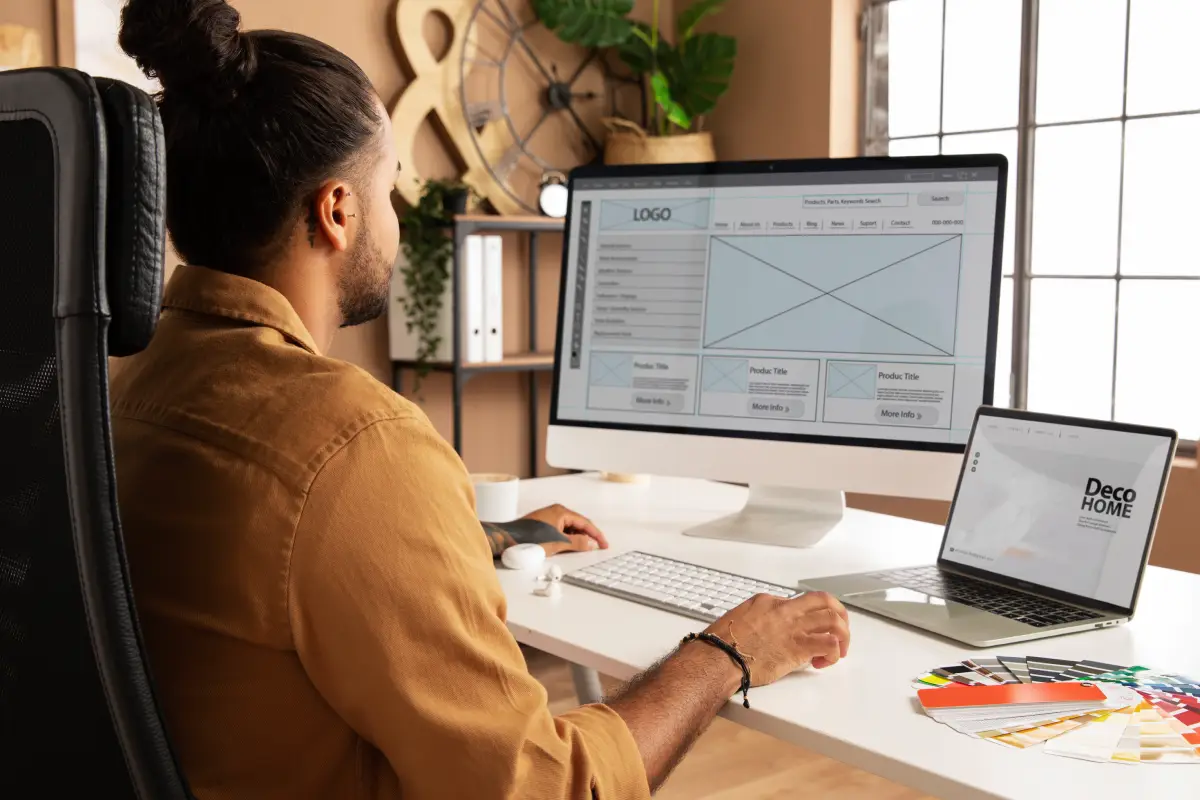How to Collaborate Effectively with Your Website Designer
Many businesses struggle to build an effective website because they don’t know how to work well with their website designer. However, poor collaboration can lead to delays and extra costs. In fact, 53% of website projects fail due to poor communication.
But don’t worry! The solution is clear: better collaboration and communication with your designer. In this blog post, we will guide you on how to collaborate effectively with your website designer and use the right tools to ensure a successful website project.
So, let’s get in!
1. Establish Clear Goals and Objectives
Having clear goals plays an important part in every aspect of your website design because it sets the direction for your website project. It ensures everyone is on the same page and knows what to achieve.
To define your goals, start by identifying your business’s core values, who your target audience is, and what outcomes you want. For example, if a company wants to increase online sales, it might set a goal to create an easy-to-navigate online store.
When a business clearly outlined its goals, their website designer will able to create a site that can boost sales by 20-30% in six months. Hence, clear goals lead to successful projects.
Utilizing OKR software can further help in setting, tracking, and achieving these objectives.
2. Communicate Effectively
Effective internal communication is key to a successful website project. Regular communication and meetings with your website designer ensure that everyone stays on the same page and the project progresses smoothly.
Using tools like email, Slack, or project management platforms such as Trello or Asana can significantly enhance communication. These tools help organise tasks and keep conversations clear and accessible.
However, when giving feedback, be clear and constructive. Instead of saying, “I don’t like this,” explain what you don’t like and why. This helps the designer understand your vision better and make appropriate changes. Another important aspect is to practice professional texting etiquette by being clear, polite, and respectful in your messages to maintain a good working relationship.
3. Provide Visual Examples and Inspirations
Visual references help align the designer’s work with your vision. By showing examples of designs you like, you make it easier for the designer to understand your style and preferences. This can save time and reduce misunderstandings. You can find inspiration from competitor websites, design portfolios, and platforms like Pinterest.
You can also sites like www.bycrawford.com to take inspirations on how expert designers are creating websites that stand out. Collect and share these examples with your designer to ensure they capture the look and feel you want for your website. Visual helps are a great way to communicate your ideas clearly and effectively.
4. Regular Feedback and Collaborative Discussions
Regular feedback and discussions are essential for a successful website project. Give specific feedback, like “Change the button colour to blue,” instead of vague comments. Schedule regular meetings to talk about progress and address any issues. This helps keep the project on track and ensures everyone is on the same page.
Moreover, open discussions allow you and your designer to share ideas and refine the design. This way, you can catch problems early and make improvements together. However, effective communication and collaboration lead to a better final product and a smoother project overall.
5. Budget Considerations
Setting a realistic budget for your website project is a vital step that you should never ignore. While it might be tempting to focus solely on cutting costs, it’s equally important to understand the value of investing in a well-designed website. A higher budget often allows for more customisation, advanced features, and a polished final product.
When discussing your project with potential web designers, make sure to clearly communicate your budget constraints. This transparency helps in aligning expectations and finding ways to balance your vision with financial limitations. Remember, a well-planned budget ensures that you get the most out of your investment in your online presence.
6. Trust and Flexibility
Trusting your designer’s expertise is the key aspect of achieving a successful website project. Their insights into current trends and user expectations can enhance your site’s appeal and functionality. Remaining open to their suggestions creates a collaborative environment where innovative ideas can flourish, potentially enhancing user experience and site performance.
For instance, a client’s willingness to adapt to a designer’s recommendation for improved navigation and checkout processes led to higher user satisfaction and increased conversions. Promoting trust and flexibility not only ensures a well-crafted website but also establishes a partnership that generates impactful digital solutions.
Conclusion
Collaborating with a web designer to bring your dream website to life can be highly rewarding with a strategic approach. Start by clearly defining your goals, conducting thorough research, setting a realistic budget, and prioritising effective communication.
A well-designed website not only enhances your online presence but also serves as an important investment in your digital success. Finding the right designer to align with your vision is key to achieving your digital goals and ensuring a productive partnership that yields exceptional results.

Leave a Reply